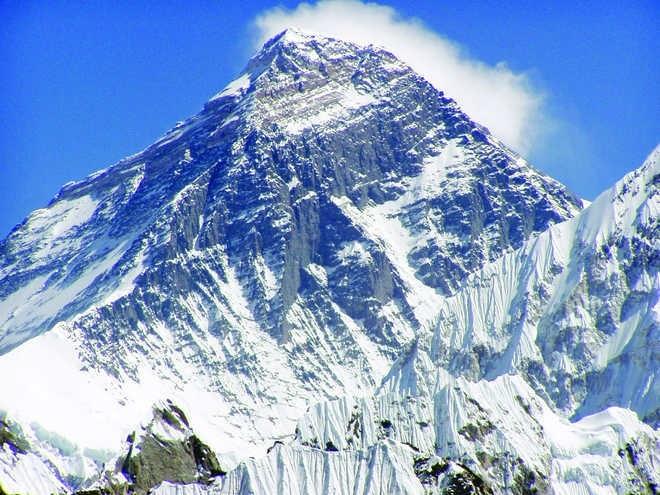
Mt Everest's Snow Cover Receded By 150 Mtr This Winter, Satellite Images Reveal
Analysing NASA satellite images from October 2023 till early January 2025, trends illustrated“a rise in snow line through January in both 2024 and 2025”, glaciologist Mauri Pelto, a professor of environmental science at Nichols College, US, wrote in a blog post on February 2.
ADVERTISEMENTAt 8,849 metres above sea level, Mount Everest is the tallest point on Earth. The Himalayan peak is located between Nepal and Tibet.
ADVERTISEMENT'Snow line' refers to the boundary or elevation at which snow permanently stays on a mountain. A 'rising snow line' - in which snow melts at lower heights, forcing the snow line boundary up a mountainside - is suggestive of a warming climate.
Pelto said that warmer and drier conditions have been prevailing in recent winters, including those of 2021, 2023, 2024 and 2025, which are driving a reduced snow cover, higher snow lines and increased forest fires.
Read Also Historic Achabal Spring Rejuvenates, Returns To Its Original State Omar Abdullah Stresses On Climate Change AwarenessWhile the region saw a few small snow events early in each winter, the snow cover does not persist, suggesting that glaciers have continued to retreat even above 6000 metres on Mount Everest, he said.
Snow cover loss during winter at these altitudes is primarily the result of sublimation - where ice directly evaporates - with losses observed up to 2.5 millimetres daily, Pelto added. Sublimation is said to significantly contribute to the loss in overall mass of a glacier, causing it to retreat.
In December 2024, Nepal saw 20-25 per cent of normal with drier conditions in the east, accompanied by above average temperatures. This resulted in extreme drought in several provinces, including Koshi Province, the glaciologist said.
He observed that January 2025 has continued to be dry, with consistently warm conditions, thereby enabling high snow lines to persist and rise from early December into early February, 2025.
“The average snow line (on Mount Everest Region glaciers on January 28, 2025) is 6,100 metres - 150 metres higher than on December 11, 2024,” Pelto wrote.
The blog post was an update to that written in May 2024, which noted a“limited snow cover” persisting since November 2023.
The glaciologist explained that the 2023-2024 winter season was“different”, because the high snow lines of 2020-21 were a result of an“extraordinary January heat wave” - there was no heat wave this time.
Instead, above normal temperature and a“lack of any significant precipitation” were critical to the outcome of rising snow line, with less than 25 millimetres of precipitation at Everest Base Camp during January 1 – March 31, 2024, Pelto said.
Follow this link to join our WhatsApp group : Join Now
| Be Part of Quality Journalism |
| Quality journalism takes a lot of time, money and hard work to produce and despite all the hardships we still do it. Our reporters and editors are working overtime in Kashmir and beyond to cover what you care about, break big stories, and expose injustices that can change lives. Today more people are reading Kashmir Observer than ever, but only a handful are paying while advertising revenues are falling fast. |
| ACT NOW |
| MONTHLY | Rs 100 | |
| YEARLY | Rs 1000 | |
| LIFETIME | Rs 10000 | |
CLICK FOR DETAILS

Legal Disclaimer:
MENAFN provides the information “as is” without warranty of any kind. We do not accept any responsibility or liability for the accuracy, content, images, videos, licenses, completeness, legality, or reliability of the information contained in this article. If you have any complaints or copyright issues related to this article, kindly contact the provider above.






















Comments
No comment